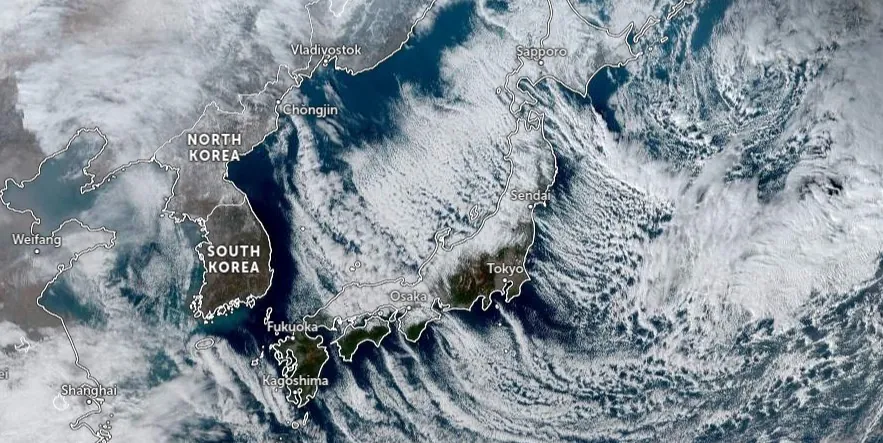Heavy to record-breaking snowfall hitting Japan, including earthquake-hit Ishikawa Prefecture

A powerful M7.6 earthquake centered in the Noto region of Ishikawa Prefecture, central Japan, on January 1, 2024, was followed by intense snowfall a week later, creating very hard conditions for survivors and complicating rescue efforts. On January 8, authorities reported 161 fatalities caused by the earthquake and 305 people missing.
Areas affected by the recent M7.6 earthquake in central Japan’s Ishikawa Prefecture are now facing intense snowfall, creating additional challenges for survivors and rescue teams. The Japan Meteorological Agency and authorities are urging people to take extra caution, particularly with quake-damaged buildings at risk of collapse under the weight of the snow, and to stay warm amid the severe cold to prevent hypothermia.
Significant snow is also affecting the wider Hokuriku region as well as Niigata Prefecture. As of Monday morning, January 8, snow accumulation in Suzu City of Ishikawa Prefecture reached 13 cm (5.1 inches), with nearby Nanao City and Wajima City recording 11 and 9 cm (4.3 and 3.5 inches), respectively. Intense snow is expected to continue mainly in the mountainous areas of the Hokuriku region and Niigata Prefecture, with flatlands also anticipating heavy snow.
The cities of Otaru and Okishi in Hokkaido recorded 68 cm (27 inches) of snow in just 12 hours, setting a new all-time record. An all-time snowfall record was also reported in Rankoshi, Hokkaido with 59 cm (23 inches) in 12 hours.
Record-breaking heavy snow is hitting parts of Japan. The earthquake-hit Ishikawa Prefecture is experiencing intense snow, creating harsh conditions for survivors and rescuers. As of Monday, 168 deaths have been confirmed, with 323 people still unaccounted for. pic.twitter.com/fRwnG860xf
— Sayaka Mori (@sayakasofiamori) January 8, 2024
In Ishikawa Prefecture, the forecast for the next 24 hours includes up to 10 cm (4 inches) of snow in mountainous areas and 5 cm (2 inches) in flatlands. Meanwhile, Niigata Prefecture could see as much as 30 cm (11.8 inches) in mountainous regions and 10 cm (3.9 inches) in flat areas. Toyama Prefecture is also bracing for 10 to 20 cm (3.9 – 7.9 inches) of snowfall.
These weather conditions pose a variety of potential hazards, including disruptions to transportation, damage to agricultural facilities, snow pileups on electrical wires and trees, and icy roads. Overnight lows in Wajima City and other quake-stricken areas dropped to around 0 °C (32 °F) Celsius on Monday.
Aftershocks continue in the Noto region and surrounding areas, with over 1 200 quakes of intensity 1 or greater on Japan’s scale recorded from January 1 through January 8, 2024. Authorities are advising people to remain vigilant as there is potential for further quakes with a maximum seismic intensity of 7.
Read more:
Update
11:21 UTC, January 15
As of 05:00 UTC, the death toll in Ishikawa Prefecture has risen to 222, as reported by the prefectural government.
This figure includes 14 disaster-related deaths caused by health deterioration during evacuation. The fatalities are distributed across various municipalities: 99 in Suzu, 88 in Wajima, 20 in Anamizu, 7 in Noto, 5 in Nanao, 2 in Shika, and 1 in Hakui. Additionally, 22 people remain unaccounted for, with 18 in Wajima and 4 in Suzu.
References:
1 Snowfall, cold increase danger in Japan’s quake-hit areas – NHK – January 8, 2024
Featured image credit: NHK (stillshot)

Commenting rules and guidelines
We value the thoughts and opinions of our readers and welcome healthy discussions on our website. In order to maintain a respectful and positive community, we ask that all commenters follow these rules.